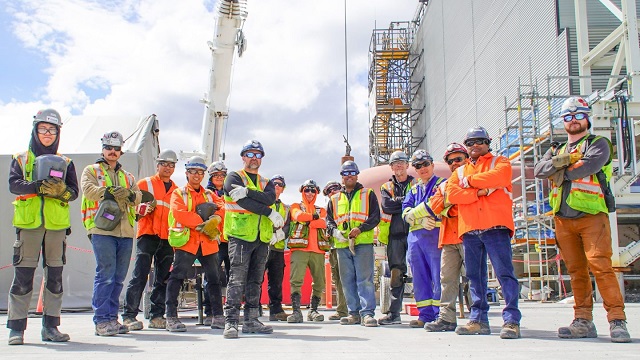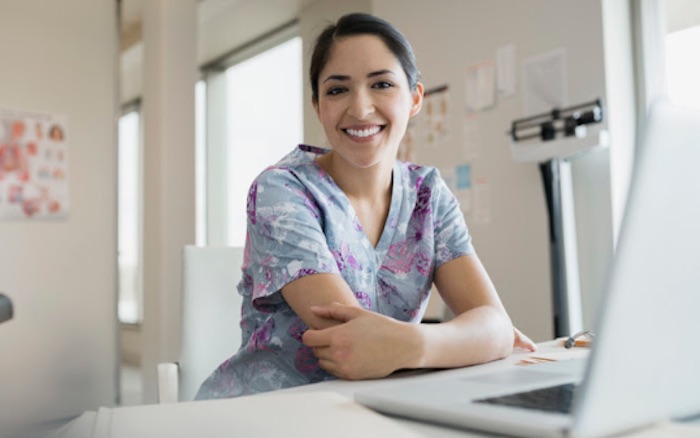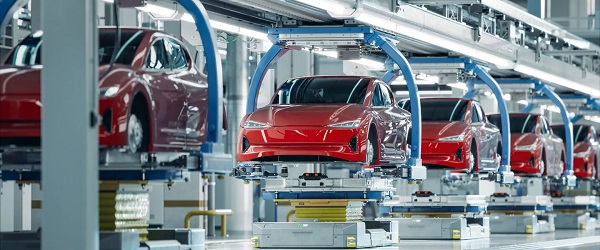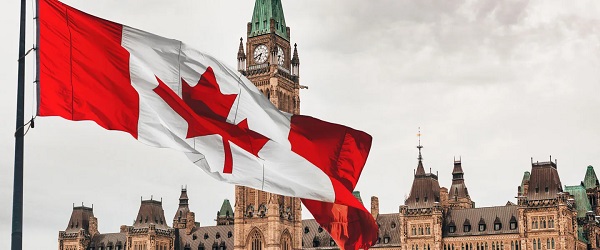Alberta
Any Downturn in Alberta’s Economy Would Inevitably Drag Canada’s Down With It

From the Frontier Centre for Public Policy
By Troy Media
Is anyone paying attention?
Canada is heading straight for an economic iceberg, and the rest of the country doesn’t seem to grasp the gravity of the situation. Alberta – long the engine of Canada’s prosperity thanks to its oil and gas sector – is facing a serious decline because the Trudeau government is obsessed with its net-zero policies. And if Alberta falters, the ripple effects will drag down the entire nation. But are we too preoccupied with federal climate targets to recognize the risks staring us in the face?
The Trudeau government’s push for net-zero emissions by 2050 may look noble on paper, but the real-world cost could be catastrophic. The numbers don’t lie: according to a recent column by Troy Media contributor Lennie Kaplan, Alberta’s oil production could drop by a staggering 54 percent by 2050. That’s not just a provincial problem; it’s a national economic emergency waiting to happen.
Let’s cut through the jargon. Alberta makes up about 15 percent of Canada’s GDP. If Alberta’s economy shrinks by $32 billion – as projected – it would trigger a 1.2 percent drop in Canada’s GDP. For context, that’s a multi-billion-dollar hole in a country whose economy is, itself, already in severe decline.
Does Ottawa think a shrinking economy will put us in a stronger position to innovate and grow? Or are they content with turning Alberta into a sacrificial lamb on the altar of climate policy, ignoring the fact that this will make Canada less competitive on the world stage?
Then there’s the job market. Alberta’s energy sector employs thousands and indirectly supports tens of thousands more across Canada. By 2050, again according to Kaplan, Alberta could shed 198,000 jobs – five percent of its workforce. These aren’t just oil rig workers; they’re engineers, construction crews, transport workers, and more.
It gets worse. When Alberta’s economy shrinks, industries from coast to coast that depend on Alberta’s vitality will also take a hit. If even 10 to 15 percent of those job losses trickle across the country, we’re looking at another 20,000 to 30,000 Canadians joining the unemployment line. Yet, where is the urgency to address this looming crisis?
Alberta isn’t just a provincial powerhouse – it’s also a major contributor to federal revenues. Between 2025 and 2050, the province’s contributions could drop by $221 billion due to declining oil and gas revenues. That’s less money for healthcare, infrastructure, and social programs from coast to coast.
For a federal government that already struggles to balance its books, the loss of up to $40 billion in federal tax contributions from Alberta is a fiscal disaster in the making. Where do they expect to make up that shortfall? Higher taxes? Slashed services? Or maybe another round of federal borrowing to kick the can down the road?
Alberta’s oil and gas isn’t just a provincial asset – it’s a critical part of Canada’s trade balance. In 2022, energy exports made up 20 percent of Canada’s total exports. Cut that by more than half, and you’re gutting Canada’s international trade position.
A $70 to 80 billion hit to export revenue could balloon the country’s trade deficit, further devaluing the Canadian dollar and making imports more expensive. In short, this isn’t just bad news for Alberta – it’s an economic calamity that could send shockwaves through every corner of the country.
And let’s not forget the federal equalization program. Alberta has long been a “have” province, contributing far more than it gets back. But if Alberta’s economy falters, it could soon be knocking on Ottawa’s door for handouts.
Imagine the political firestorm if Alberta becomes a “have-not” province, competing for federal support with the very provinces that have relied on its success. The strain on equalization could pit regions against each other, creating a toxic political environment when unity is more crucial than ever.
Does Ottawa even care?
Alberta’s decline isn’t just Alberta’s problem. It’s a Canadian problem. The Trudeau government’s climate obsession needs to take this into account. We cannot afford to sacrifice Alberta’s economic engine without dragging the rest of the country down with it.
What’s the plan to balance climate goals with economic reality? So far, there’s been little more than vague promises and short-term thinking. If Ottawa doesn’t wake up to the real-world consequences of Alberta’s decline, we’re all in for a harsh economic reckoning.
It’s time for our leaders to prioritize pragmatic solutions over virtue signalling. Because if Alberta goes down, the rest of Canada won’t be far behind.
First published here.
Troy Media is an editorial content provider to media outlets and its own hosted community news outlets across Canada.
Alberta
Alberta school boards required to meet new standards for school library materials with regard to sexual content

Alberta’s government has introduced new standards to ensure school library materials are age-appropriate.
School libraries should be safe and supportive places where students can learn and explore without being exposed to inappropriate sexual content. However, in the absence of a consistent standard for selecting age-appropriate library materials, school boards have taken different approaches, leading to concerns about safeguards in place.
In response to these concerns, and informed by feedback from education partners and the public, Alberta’s government has created standards to provide school boards with clear direction on the selection, availability and access to school library materials, such as books.
“Our actions to ensure that materials in school libraries don’t expose children to sexual content were never about banning books. These new standards are to ensure that school boards have clear guidance to ensure age-appropriate access to school library materials, while reflecting the values and priorities of Albertans.”
The new standards set clear expectations for school library materials with regard to sexual content and require school boards to implement policies to support these standards.
Standards for school library materials
Under the new standards, school libraries are not permitted to include library materials containing explicit sexual content. Non-explicit sexual content may be accessible to students in Grade 10 and above, provided it is age-appropriate.
“Protecting kids from explicit content is common sense. LGBTQ youth, like all children, deserve to see themselves in stories that are age-appropriate, supportive and affirming – not in material that sexualizes or confuses them.”
School boards must also regularly review their school library collections, publish a full list of available materials and ensure that a staff member supervises students’ access to school library materials. School boards will have to remove any materials with explicit sexual content from their school libraries by October 1.
School board policies and procedures
All school boards must have publicly available policies that align with the new standards for selecting and managing library materials by January 1, 2026. School boards can either create new policies or update existing ones to meet these requirements.
These policies must outline how school library materials are selected and reviewed, how staff supervise students’ access throughout the school day, and how a student, parent, school board employee or other member of the school community can request a review or removal of materials in the school library. School boards are also required to clearly communicate these policies to employees, students and parents before January 2026.
“A robust, grade- and age-appropriate library catalogue is vital for student success. We welcome the ministry’s initiative to establish consistent standards and appreciate the ongoing consultation to help craft a plan that will serve our families and communities well.”
“Red Deer Public Schools welcomes the new provincial standards for school library materials. Our division is committed to maintaining welcoming, respectful learning spaces where students can grow and thrive. Under the new standards for school libraries, we remain dedicated to providing learning resources that reflect our values and support student success.”
Quick facts
- The new standards will apply to public, separate, francophone, charter and independent schools.
- The ministerial order does not apply to municipal libraries located within schools or materials selected for use by teachers as learning and teaching resources.
- From May 26 to June 6, almost 80,000 people completed an online survey to provide feedback on the creation of consistent standards to ensure the age-appropriateness of materials available to students in school libraries.
Related information
- Ministerial Order
- School library standards engagement
- Reference Materials: Content warning: this document contains graphic content that may be disturbing to viewers and is not appropriate for young viewers. Viewer discretion is advised.
Alberta
Fourteen regional advisory councils will shape health care planning and delivery in Alberta

Regional health councils give Albertans a voice
Albertans want a health care system that reflects where they live and adapts to the unique needs of their communities. As part of the province’s health care refocus, Alberta’s government committed to strengthening community voices by providing more opportunities for Albertans to bring forward their local priorities and offer input on how to improve the system.
The regional advisory councils, made up of 150 members from 71 communities, will advise Alberta’s four health ministries and the newly refocused health agencies: Primary Care Alberta, Acute Care Alberta, Assisted Living Alberta and Recovery Alberta. Each council will explore solutions to local challenges and identify opportunities for the health system to better support community decision-making.
“By hearing first-hand community feedback directly, we can build a system that is more responsive, more inclusive and ultimately more effective for everyone. I am looking forward to hearing the councils’ insights, perspectives and solutions to improve health care in all corners of our province.”
“Regional advisory councils will strengthen acute care by giving communities a direct voice. Their insights will help us address local needs, improve patient outcomes and ensure timely access to hospital services.”
“A ‘one-size-fits-all’ approach does not address unique regional needs when it comes to mental health and addiction challenges. These councils will help us hear directly from communities, allowing us to tailor supports and services to meet the needs of Albertans where they are.”
“Every community has unique needs, especially when it comes to seniors and vulnerable populations. These regional advisory councils will help us better understand those needs and ensure that assisted living services are shaped by the people who rely on them.”
Members include Albertans from all walks of life, health care workers, community leaders, Indigenous and municipal representatives, and others with a strong tie to their region. About one-third of members work in health care, and more than half of the council chairs are health professionals. Almost one-quarter are elected municipal officials, including 10 serving as chairs or vice-chairs. Ten councils also include a representative from a local health foundation.
Council members will share local and regional perspectives on health care services, planning and priorities to help ensure decisions reflect the realities of their communities. By engaging with residents, providers and organizations, they will gather feedback, identify challenges and bring forward ideas that may not otherwise reach government.
Through collaboration and community-informed solutions, members will help make the health system more responsive, accessible and better able to meet the needs of Albertans across the province.
“As Primary Care Alberta works to improve access to primary health care services and programs across Alberta, we are grateful to have the opportunity to tap into a dedicated group of community leaders and representatives. These people know their communities and local needs, and we look forward to learning from their experiences and knowledge as we shape the future of primary care in Alberta.”
“The regional advisory councils will help to bring forward the voices of patients, families and front-line providers from every corner of Alberta. Their insights will help us plan smarter and deliver care that’s timely, effective and truly local. We look forward to working closely with them to strengthen hospital and surgical services across the province.”
“Nobody understands the health care challenges unique to a community better than the people who live there. The regional health advisory councils are made up of those living and working on the front lines across the province, ensuring we are getting the perspective of Albertans most affected by our health care system.”
“Alongside Recovery Alberta’s staff and physician team, these regional advisory councils will build upon the high standard of mental health, addiction and correctional health services delivered in Alberta.”
Indigenous Advisory Council
Alberta’s government continues to work directly with Indigenous leaders across the province to establish the Indigenous Advisory Council to strengthen health care services for First Nation, Métis and Inuit communities.
With up to 22 members, including Indigenous health care workers, community leaders and individuals receiving health care services, the council will represent diverse perspectives across Alberta. Members will provide community perspectives about clinical service planning, capital projects, workforce development and cultural integration in health care.
Related information
-

 Business2 days ago
Business2 days agoWEF-linked Linda Yaccarino to step down as CEO of X
-

 Automotive2 days ago
Automotive2 days agoAmerica’s EV Industry Must Now Compete On A Level Playing Field
-

 Business2 days ago
Business2 days ago‘Experts’ Warned Free Markets Would Ruin Argentina — Looks Like They Were Dead Wrong
-

 International2 days ago
International2 days agoSecret Service suspends six agents nearly a year after Trump assassination attempt
-

 Business1 day ago
Business1 day agoCarney government should recognize that private sector drives Canada’s economy
-

 Bruce Dowbiggin1 day ago
Bruce Dowbiggin1 day agoThe Covid 19 Disaster: When Do We Get The Apologies?
-

 Alberta1 day ago
Alberta1 day agoFourteen regional advisory councils will shape health care planning and delivery in Alberta
-

 Alberta1 day ago
Alberta1 day agoAlberta school boards required to meet new standards for school library materials with regard to sexual content






